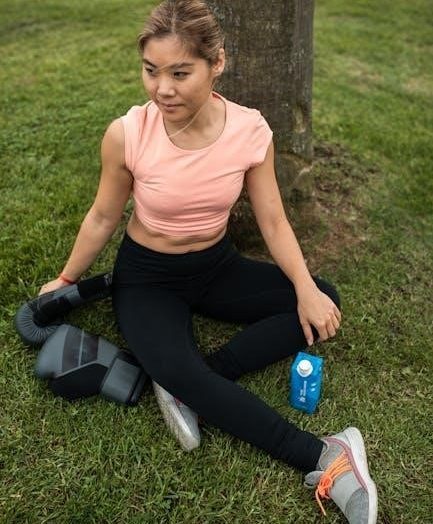Welcome to the ultimate guide on pant break charts! A Pants Break Chart is a essential tool for determining the ideal pant length and style. It helps you understand how pants should fit, break, and complement your shoes, body type, and occasion. Whether you’re aiming for a modern no-break look or a classic full-break style, this guide will walk you through everything you need to know to achieve the perfect fit. Learn how to measure, choose the right break, and style your pants with confidence!
1.1 Understanding the Importance of Pant Break
The pant break is a critical element in achieving a polished and stylish appearance. It determines how fabric folds or rests on the shoe, influencing the overall look and comfort. A well-executed break ensures pants complement the shoe, body type, and occasion’s formality. The right break prevents pants from appearing too short or long, enhancing both aesthetics and functionality. Understanding pant breaks is essential for a flawless fit, ensuring confidence and style in any setting.
1.2 Purpose of a Fit Guide
A fit guide serves as a comprehensive tool to help individuals select pants that align with their body type, personal style, and occasion. It provides detailed measurements and styling tips, ensuring a perfect fit. By understanding inseam, waist, and break options, a fit guide empowers users to make informed choices. It bridges the gap between fashion and functionality, offering expert advice to enhance comfort and confidence. Whether for formal events or casual outings, a fit guide is indispensable for achieving a tailored look.
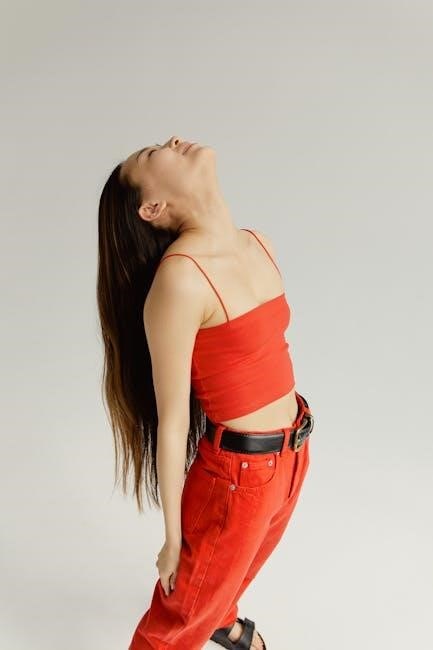
Types of Pants Break
Pants breaks are categorized into four main styles: No Break, Quarter Break, Half Break, and Full Break. Each style determines how the fabric folds over the shoes, balancing aesthetics and functionality.
2.1 No Break Pants
No Break Pants are a modern style where the pant leg stops just above the shoe, creating a sleek, streamlined look. This style minimizes fabric folding, offering a contemporary aesthetic. Ideal for slim-fit trousers, no break pants are perfect for fashion-forward individuals. They showcase socks, adding a touch of personality to outfits. Best suited for formal or business casual settings, no break pants complement tailored suits and slim shoes. This style emphasizes clean lines, making it a favorite for those prioritizing a polished, youthful appearance.
2.2 Quarter Break Pants
Quarter Break Pants offer a subtle balance between modern and classic styles. The pant leg extends slightly past the shoe, creating a small, single fold at the top. This break is less noticeable than a half or full break, providing a sleek yet timeless look. Ideal for those who want a modest crease, quarter break pants are versatile and suit various occasions. They work well with both formal and casual outfits, making them a practical choice for everyday wear while maintaining a polished appearance. This style is perfect for balancing fashion and functionality seamlessly.
2.3 Half (Medium) Break Pants
Half Break Pants, also known as medium break pants, strike a balance between style and practicality. The pant leg extends about one-third of the way down the shoe, creating a moderate fold. This break offers a classic, timeless look while maintaining versatility. It suits most body types and occasions, making it a popular choice for both formal and business casual settings. The medium break provides a balanced appearance, ensuring the pants complement the shoes without excessive fabric bunching, making it ideal for those seeking a polished yet understated look.
2.4 Full Break Pants
Full Break Pants are characterized by a generous amount of fabric that folds over the shoe, creating a noticeable break. This style is typically seen in traditional or formal attire, such as pleated trousers. The pant leg extends significantly past the shoe, often creating a pronounced bunching effect at the ankle. Full break pants are ideal for those who prefer a classic, conservative look and are commonly worn with dress shoes in formal settings. This break adds a touch of sophistication and is often associated with a more mature aesthetic.
Factors Influencing Pant Break Choice
Your pant break choice is shaped by personal style, body type, and occasion formality. These factors ensure your pants complement your shoes, fit, and overall aesthetic seamlessly.
3.1 Personal Style and Preference
Your personal style and preference play a significant role in choosing the right pant break. Contemporary looks often favor no-break or slight break for a modern, sleek appearance, while full breaks suit classic, conservative styles. Trends influence choices, with slim-fit designs leaning toward minimal breaks and vintage styles embracing fuller ones. Ultimately, your pant break should align with your aesthetic, ensuring confidence and comfort in your outfit. This balance between trend and personal taste ensures your pants complement your overall look and occasion. Style is deeply personal, making this choice crucial for your wardrobe.
3.2 Body Type and Proportions
Your body type and proportions significantly influence the ideal pant break. Taller individuals can pull off longer breaks, while shorter people benefit from shorter breaks to avoid overwhelming their frame. Slim builds look great in tailored fits with a slight break, while athletic or stocky body types may prefer a bit more fabric for balance. Ensuring harmony between pant length and body proportions creates a polished, put-together appearance. Consider your height, leg length, and overall silhouette when selecting the perfect break for a flattering fit.
3.3 Formality of the Occasion
The formality of the occasion plays a crucial role in determining the appropriate pant break. For formal events like weddings or business meetings, a full break or medium break is ideal, as it creates a polished, professional look. In contrast, casual outings or relaxed gatherings may call for a no-break or quarter-break style, which offers a modern, streamlined appearance. Matching the break to the event’s formality ensures your outfit is appropriately styled and balanced, making you look effortlessly put-together for any setting.

How to Measure for the Perfect Fit
Accurate measurements are key to achieving the perfect fit. Start with your waist measurement, then measure the inseam and pant length to ensure the ideal break and style.
4.1 Waist Measurement
Measuring your waist accurately is the first step in achieving the perfect fit. Stand upright and wrap a flexible tape measure around your natural waistline, typically just above the hipbone. Ensure the tape is snug but not tight. For most pants, the waist measurement corresponds to the size chart, which ranges from approximately 28-40 inches or 70-100 cm. This measurement determines how the pants will sit on your body, ensuring comfort and proper fit. Accurate waist measurement is crucial for aligning the pant break and overall style effectively.
4.2 Inseam Measurement
The inseam is a critical measurement for determining pant length and break. It is measured from the base of the crotch seam to the bottom of the pant leg. To measure accurately, stand straight and place the tape measure along the inside of your leg, starting at the crotch and ending at the ankle bone. This measurement ensures the pants will hit your shoes at the correct point, creating the desired break. Inseam lengths vary, with standard options including short, regular, and long, typically ranging from 28 to 34 inches or 70 to 85 cm.
4.3 Pant Length and Break Calculation
Pant length and break calculation ensures a polished look. Measure inseam and consider shoe height. For no break, pants graze the shoe; quarter break adds a slight fold. Half break folds 1-2 inches, while full break folds 2-3 inches. This calculation balances style, comfort, and proportion, ensuring pants complement your body and shoes flawlessly. Proper break enhances your overall appearance, making it a key detail in tailoring and styling.
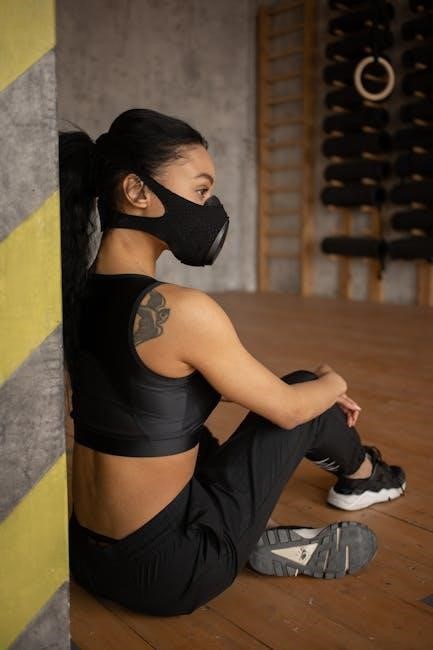
Size Chart and Inseam Guide
A size chart and inseam guide provide standardized measurements for pants, including waist, inseam, and overall fit. These guides vary by brand and body type, offering options for short, regular, and long inseam lengths. Understanding these measurements ensures the perfect fit, blending comfort and style effectively.
5.1 Standard Inseam Lengths
Standard inseam lengths vary by brand and style but typically range from 55cm to 61cm for short, regular, and long options. Short inseams (55-58cm) suit petite frames, while regular (58-60cm) fits most body types. Long inseams (60-61cm) cater to taller individuals. These measurements ensure the pant break aligns with the shoe, creating a balanced look. Matching inseam to body proportions and desired break type is key for a polished, tailored appearance. Always refer to size charts for precise fit guidance.
5.2 Size Chart for Different Body Types
A size chart for different body types ensures a tailored fit by addressing unique proportions. For example, tall and slim individuals may require longer inseams and leaner cuts, while shorter or stockier frames benefit from adjusted waist-to-inseam ratios. Athletic builds often need more room in the thigh. By categorizing sizes based on body type, charts help match pants to individual shapes, ensuring comfort and flattering silhouettes. Always measure accurately and consult charts to find the best fit for your specific physique and desired pant style.
5.3 Inseam Variations (Short, Regular, Long)
Inseam variations cater to different body types and preferences. Short inseams (26-28 inches) suit shorter individuals or those preferring a no-break style. Regular inseams (29-31 inches) are ideal for average heights, offering a balanced fit. Long inseams (32+ inches) accommodate taller frames or styles requiring a full break. Proper inseam length ensures pants sit correctly on the shoe, avoiding excessive fabric pooling or a too-short appearance. Choosing the right inseam is crucial for both comfort and achieving the desired pant break style. Always measure accurately to select the perfect fit for your needs.
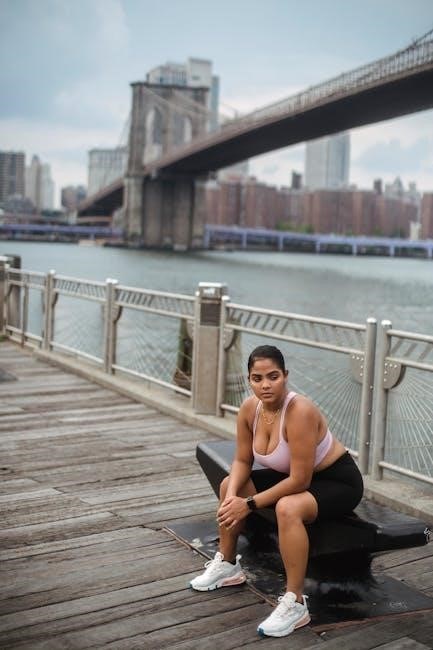
Styling Tips for Each Break Type
Discover how to style each pant break type to enhance your look. From no-break modernity to full-break elegance, learn how to balance proportions and elevate your outfit aesthetics seamlessly.
6.1 No Break Pants Styling
No-break pants offer a sleek, modern look, sitting just above the shoe. This style is ideal for showcasing bold socks and pairs perfectly with slim-fit shirts. For a polished appearance, opt for loafers or sleek sneakers. The no-break creates a streamlined silhouette, making it a favorite for contemporary fashion. Ensure the pants are tailored to skim the body for a clean, refined aesthetic. This break is perfect for those wanting a trendy, minimalist vibe that keeps the focus on the shoes and overall outfit harmony.
6.2 Quarter Break Pants Styling
Quarter-break pants strike a balance between modern and classic styles. The slight fabric fold at the shoe adds a touch of sophistication without overwhelming the outfit. Pair them with dress shoes or loafers for a refined look. Slim or tailored fits work best, as they maintain a clean line. This break is versatile, suitable for both formal and business-casual settings. It’s ideal for those who want a subtle, elegant detail that enhances their overall appearance while keeping the focus on the shoes and outfit coordination.
6.3 Half Break Pants Styling
Half-break pants, also known as medium break, offer a timeless and balanced look. They create a noticeable fold at the shoe, adding a classic touch to any outfit. This style is versatile, working well with both dress shoes and loafers. Pair them with a tailored blazer for a formal setting or a button-down shirt for a business-casual look. The medium break is perfect for those seeking a polished yet approachable style that complements most body types and occasions. It’s a go-to choice for versatility and sophistication, ensuring a well-rounded appearance.
6.4 Full Break Pants Styling
Full-break pants create a sophisticated, classic look with a noticeable fold at the shoe. This style is ideal for formal events and pairs perfectly with dress shoes like Oxfords or loafers. The longer length allows for a elegant drape, making it a great choice for those seeking a timeless, polished appearance. Pair full-break pants with a tailored blazer for a refined look or with a crisp button-down shirt for a more relaxed yet stylish outfit. This break complements traditional aesthetics and ensures a balanced, mature silhouette that’s perfect for formal occasions.
When to Choose Each Break Type
Choosing the right pant break depends on the occasion, personal style, and body type. This section explores when to opt for no-break, quarter, half, or full-break pants.
7.1 Formal Events
For formal events, the choice of pant break is crucial to maintain elegance. A full break is traditionally preferred as it creates a balanced, conservative look. The fabric folds slightly over the shoe, complementing dress shoes or oxfords. This style is ideal for black-tie events or weddings. However, a half break can also work for a slightly modern twist while still appearing polished. Ensure the pants are tailored to sit just above the shoe heel for a refined appearance. Avoid no break or quarter break pants in ultra-formal settings to maintain sophistication.
7.2 Business Casual Settings
In business casual environments, a quarter break or half break is ideal. These styles strike a balance between professionalism and relaxed elegance. A quarter break allows a subtle fold at the shoe, pairing well with loafers or dress shoes. A half break offers a slightly more tailored look, suitable for chinos or wool trousers. Avoid full break pants, as they may appear overly formal, and steer clear of no break styles, which might seem too trendy for business casual. The goal is to look polished yet approachable, ensuring your pants complement the setting without excessive fabric pooling.
7.3 Casual Outfits
Casual outfits offer flexibility in pant break choices, allowing for a more relaxed aesthetic. Opt for no break or quarter break pants to achieve a modern, trendy look. These styles work well with sneakers, boots, or casual loafers, creating a clean, streamlined appearance. Pair slim-fit jeans or chinos with a no break for a contemporary vibe, or go for a quarter break with joggers or cargo pants for a slightly more laid-back feel. The key is to balance comfort and style, ensuring your pants complement your casual footwear without excessive fabric pooling.
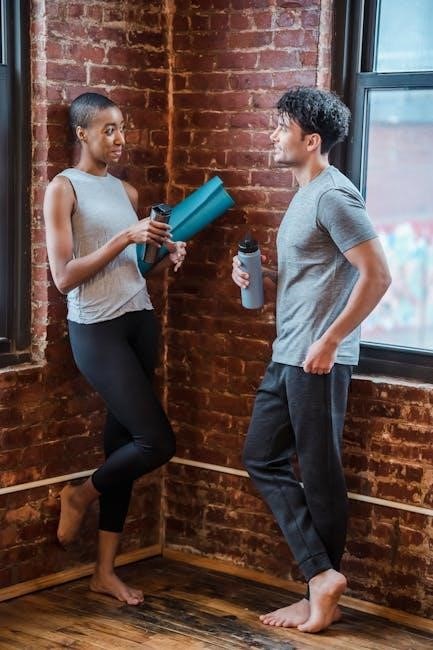
Alterations and Tailoring
Professional tailoring ensures a perfect fit by adjusting hemlines, waist, and seat. Hemming pants for the ideal break enhances style and comfort, making every outfit look polished.
8.1 Hemming Pants for the Perfect Break
Hemming pants is a crucial step in achieving the perfect break. A tailor will adjust the pant length to ensure the fabric folds flawlessly over your shoes, creating a polished look. For a no-break style, the hem stops just above the shoe, while a full break allows a subtle fold. Proper hemming enhances comfort and style, making your pants look tailored to perfection. It’s a small detail that makes a big difference in your overall appearance.
8.2 Tailoring for Body Fit
Tailoring for body fit ensures your pants complement your physique. A good tailor adjusts the waist, seat, and thigh to create a smooth, streamlined look. This process prevents excessive fabric from sagging or clinging uncomfortably. By addressing specific areas, tailoring enhances both comfort and aesthetics, ensuring the pants skim your body naturally. Whether you’re tall, short, or athletic, tailored adjustments can create a balanced, polished appearance that boosts confidence and style.
8.3 Adjusting Waist and Seat
Adjusting the waist and seat ensures a comfortable and flattering fit. The waistband should sit naturally at your body’s narrowest point, while the seat aligns smoothly with your curves. Tailors can tweak darts or seams to create a tailored look without restricting movement. Proper alterations prevent gapping or tightness, ensuring the pants feel as good as they look. These adjustments are crucial for achieving a polished, custom fit that enhances your overall silhouette and confidence in your outfit.
Common Mistakes to Avoid
Ensuring a perfect fit, waist and seat adjustments are crucial. Tailors can modify darts or seams for comfort and aesthetics, preventing gaps or tightness. Proper alterations enhance both appearance and comfort, tailoring the pants to your body for a polished, custom fit that boosts confidence and style. These tweaks ensure the waist sits naturally and the seat aligns smoothly, avoiding common fit issues.
9.1 Pants Too Short or Too Long
Pants that are too short or too long disrupt the balance of your outfit. Too-short pants expose too much sock, while overly long pants bunch unflatteringly. Proper length ensures a polished look, with the break resting naturally above the shoe. Measure inseam accurately and consider body proportions to avoid these common fit issues. Tailoring is key to achieving the perfect pant length, ensuring comfort and style. A well-fitted pant enhances overall aesthetics, making it essential to prioritize accurate measurements and alterations.
9.2 Incorrect Break for Body Type
Choosing the wrong pant break for your body type can throw off your entire look. For example, taller individuals may find full breaks overwhelming, while shorter people might look swamped in excessive fabric. Stocky builds benefit from cleaner lines, avoiding too much bunching, while athletic types may prefer a balanced medium break. Ensuring the break complements your proportions is key to a polished, flattering appearance. Always consider your body type when selecting pant breaks to maintain harmony and confidence in your style. Proper fit enhances both comfort and aesthetics.
9.3 Ignoring Shoe-Pant Interaction
Ignoring how your pants interact with your shoes can ruin an otherwise polished look. The pant break should complement the shoe’s design and height. For instance, a full break pairs well with boots or formal shoes, while a no break is ideal for sleek loafers or dress shoes. Failing to consider this interaction can result in an unbalanced appearance, with pants either pooling awkwardly or sitting too high. Ensure your pant length and break align with your footwear to create a cohesive, stylish outfit. Proper coordination enhances both comfort and aesthetics.
Maintenance and Care
Proper care ensures your pants maintain their break and fit. Clean delicate fabrics professionally, iron inside out, and store hung to preserve shape.
10.1 Preserving the Break
Preserving the break ensures your pants maintain their stylish appearance. Hang pants to avoid creases and wrinkles. Iron them inside out on low heat to prevent damage. Regular steaming helps maintain fabric texture. For delicate fabrics, professional cleaning is recommended. Proper storage in a cool, dry place prevents moisture buildup. Always check care labels for specific instructions. These simple steps extend the life of your pants and keep their break looking sharp.
10.2 Cleaning and Ironing Tips
For optimal care, wash pants in cold water with mild detergent to avoid fabric damage. Avoid machine drying; air-dry instead. Iron pants inside out on low heat to preserve the break. Use steam for wrinkles, especially on wool or linen. Always iron from the waist down, smoothing the fabric evenly. For stubborn creases, iron while slightly damp. Store pants hung to maintain shape. Regular cleaning and proper ironing keep your pants looking sharp and extend their lifespan.

Pant Break Guide for Different Body Types
Tall and slim individuals thrive with full breaks, balancing proportions. Short and stocky frames benefit from no breaks to avoid bulk. Athletic builds shine with quarter breaks for a streamlined look.
11.1 Tall and Slim
Tall and slim individuals can create a balanced look by choosing pant breaks that complement their proportions. A full break or medium break works well, as it adds visual weight to the lower half without overwhelming their frame. Pairing slim-fit pants with a slightly longer break helps elongate the legs further. Opt for monochromatic outfits to enhance height and streamline the silhouette. Patterned shirts or jackets can add texture without breaking the flow. This style ensures tall and slim individuals look polished and proportionate, making the most of their natural advantages.
11.2 Short and Stocky
For shorter and stockier builds, the goal is to create a balanced, streamlined look. Opt for a no break or quarter break to avoid adding bulk to the legs. Slim-fit or tapered pants are ideal, as they create a longer, leaner line. Avoid pleated pants or excessive fabric, as they can make the legs appear shorter. Pairing darker colors with monochromatic outfits can enhance the illusion of height. Tailoring is key—ensure pants fit well through the thigh and seat to avoid an overly boxy appearance. This approach helps proportionally balance the silhouette for a polished look.
11.3 Athletic Build
For individuals with an athletic build, the focus is on balancing muscle definition with a streamlined fit. A quarter break or half break works well, as it creates a balanced proportion without overwhelming the frame. Look for pants with a bit of stretch for comfort and mobility. Tailored fits through the thigh and seat are essential to avoid a restrictive feel. Opt for flat-front or slightly tapered styles to maintain a sleek appearance. Pairing with loafers or dress shoes in a contrasting color can enhance the overall aesthetic. Proper tailoring ensures the pants skim the body without clinging, offering both style and functionality.

Current Trends in Pants Break
Modern fashion favors slim-fit and contemporary breaks, with a shift toward tailored, clean looks. Vintage and classic styles are also trending, offering timeless appeal for formal and casual settings alike.
12.1 Slim Fit and Modern Breaks
In contemporary fashion, slim-fit pants with modern breaks are highly popular. These styles feature a streamlined silhouette with minimal fabric at the hem, creating a sleek, fashionable look. A slim fit pairs perfectly with a no break or quarter break, where the pant leg sits just above or slightly grazes the shoe. This trend emphasizes clean lines and a tailored appearance, ideal for those seeking a stylish yet versatile wardrobe. Modern breaks are particularly flattering for slimmer body types and are often worn in formal and business casual settings.
12.2 Vintage and Classic Breaks
Vintage and classic breaks evoke timeless elegance, often featuring longer pant legs with a more pronounced fold at the hem. A full break is characteristic of this style, where the fabric drapes generously over the shoes, creating a sophisticated look. This trend is reminiscent of traditional tailoring and is commonly seen in formal attire. Classic breaks are versatile, suiting various body types, and are particularly popular for their ability to convey a sense of refinement and heritage. They remain a staple in many wardrobes, blending seamlessly with both formal and semi-formal ensembles.
